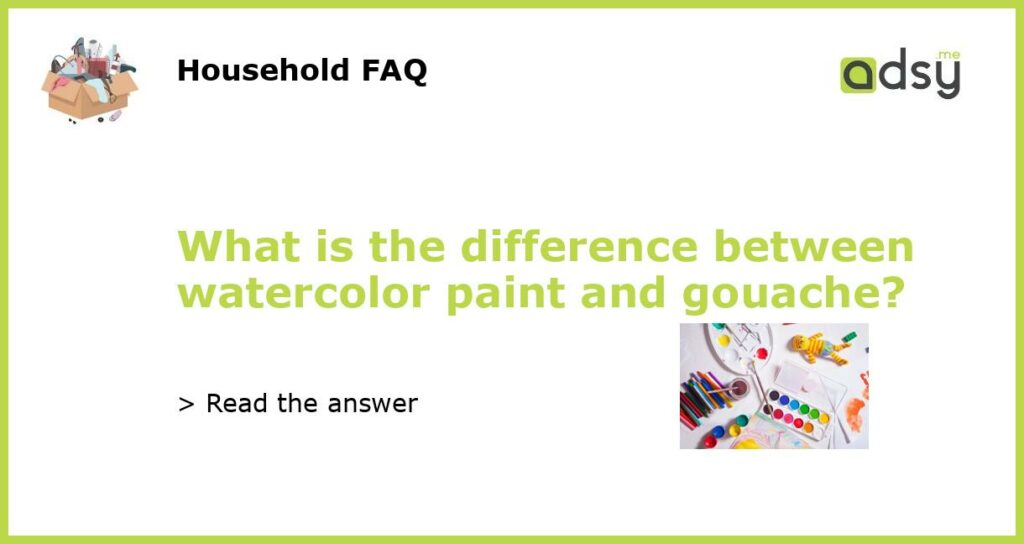Watercolor Paint vs Gouache: Understanding the Key Differences
When it comes to painting, there are various mediums to choose from, each with its own unique characteristics. Two popular options are watercolor paint and gouache. While they may appear similar at first glance, there are distinct differences between the two. In this article, we will explore the key differences between watercolor paint and gouache, helping you understand their individual qualities and decide which one is best suited for your artistic needs.
Watercolor Paint: Transparency and Delicate Washes
Watercolor paint is a popular choice among artists due to its transparency and ability to create delicate washes. It is made by combining pigments with a binder, such as gum arabic, and can be used on various surfaces, including paper, canvas, and wood. One of the defining characteristics of watercolor paint is its ability to let light pass through the layer of paint, creating a luminous effect. This transparency allows the artist to layer multiple colors to achieve different shades and tones. Watercolor paint is typically applied with brushes, and the amount of water used can vary the intensity of the color.
Gouache: Vibrant and Opaque Colors
Gouache, on the other hand, offers a different painting experience compared to watercolor. It is a type of water-based paint that contains pigments and a larger amount of binding agent, such as gum arabic or dextrin. The higher concentration of pigments in gouache results in vibrant and opaque colors, making it suitable for achieving bold and solid coverage. Unlike watercolor, gouache does not allow light to pass through the paint layer, resulting in a more matte finish. This opacity is especially useful when working with intricate details or correcting mistakes, as gouache can be easily layered and reworked.
Differences in Application and Techniques
The application and techniques used with watercolor paint and gouache also differ. With watercolor, the traditional approach is to start with lighter washes and gradually add layers of color, building up the intensity. The transparency of watercolor allows for greater flexibility in blending and creating subtle gradients. Techniques such as wet-on-wet and wet-on-dry are commonly used in watercolor painting, allowing for various effects, from soft washes to crisp details.
Gouache, on the other hand, is often applied more opaquely and can be used like acrylic or oil paint. It can be layered without lifting the underlying layers, making it easier to correct mistakes or make adjustments. Techniques such as dry brushing and stippling are commonly used with gouache to create texture and add details. Gouache also dries quickly, allowing for relatively fast completion of artworks.
Surface and Longevity
The choice of surface and the longevity of the artwork can also be factors when deciding between watercolor paint and gouache. Watercolor works best on absorbent surfaces, such as watercolor paper, as it relies on the paper’s ability to hold the paint and retain its vibrancy. However, watercolor paintings may be more prone to fading over time if not properly protected or framed under glass. Gouache, on the other hand, can be used on a variety of surfaces, including watercolor paper, canvas, and illustration board. It has a higher adhesive quality and is more resistant to cracking or flaking compared to watercolor.
Personal Preference and Artistic Style
Ultimately, the choice between watercolor paint and gouache boils down to personal preference and artistic style. If you enjoy the transparency and delicate washes of watercolor, along with its potential for creating luminosity, then watercolor may be the right choice for you. On the other hand, if you prefer vibrant and opaque colors, along with the ability to easily correct mistakes, gouache may be more suitable. Experimentation and practice with both mediums will allow you to develop your own style and determine which medium best suits your artistic vision.






